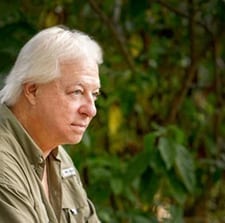RIP, Faithful Ones
March 8, 2019By Tom Poland
I had to see it. I heard it was up North Carolina way, and with the aid of my son-in-law’s Garmin GPS I found it, the resting place of mules and horses. To see this poignant cemetery is to see how urban encroachment chews up farmland. To see it is to witness a changing Southland. Granite tombstones stand in a ridge of woods overlooking I-540. To their back sits a large apartment complex. Farmland no more. Mules and horses no more. A man who loved and appreciated the hardworking animals that kept his farm and his life going buried them with dignity. Well, that was a ways back before combustible engines put mules and horses out to pasture for good.
Mr. Fabius H. Page possibly is buried on this ridge as well. At least the coordinates for his grave will take you there. That’s how we found wooded graveyard for faithful farm animals. We parked and walked up a wooded ridge. Then we began to see the stones.
“Lulu, Bay Mule, Very Swift, 1902, Age 28”
“Bessie, Driving Mare, Brown, White Face, 4 White Feet, 1903 – 1937”
You’ll find eight other graves here, the resting place of Fab Page’s beloved farm animals. Back then locals knew the man who buried his animals with dignity as Fab. It’s said that Fab’s will stated that his family could not sell the land the cemetery is on. He intended it to be a perpetual memorial and so far it is. It’s not far from the Research Triangle Park. You can stand on this wooded ridge, close your eyes, and imagine what Page farm might have looked like. Perhaps a sweep of green pastures stood where the apartment complex and all its cars sit. Over there, perhaps, stood a handsome barn. As for I-540 with all its speeding traffic, we know this. It used to be a dirt road. Every Fourth of July locals would host a horse race there. Now it’s the site of traffic jams and accidents.
You can stand on that ridge with your eyes closed and imagine cattle lowing. You have to concentrate hard, however, to block out the commercial air flights roaring low overhead. You can imagine rows of corn standing green in the sun, but that takes focus too. Asphalt and buildings dominate the land. Wholesale change has arrived full force.



I had a reporter for the Athens Banner Herald, Wayne Ford, write something I hold dear. “Tom Poland is an inquisitive man who keeps an eye out for extravagant chunks of nature, disappearing cultures, and people who are salt of the earth. Change is what Poland touches upon frequently.” Indeed I do and this mule and horse cemetery represents change in a way I have not seen. If you drive the land as much as I do you will see junk yards filled with twisted, crushed, rusting vehicles. You will see, too, forsaken tractors overtaken by vines and weeds here and there. I suppose these are cemeteries too, but none have gravestones like Fab Page’s mules and horses. The close as I have come to such a magnificent place are the handmade monuments at the graves of dogs and cats that were beloved members of the family.
I have no doubt these faithful beasts of burden were members of Fab Page’s family, and it touches me that he erected monuments to them. I hope no one or nothing ever disturbs this resting place. As much as anything it is a memorial to a South the likes of which we will never see again. Each day the land surrounding us dies a little but we fail to take notice.
Thank you, Fab Page, and long may your faithful ones RIP.
Photos by Tom Poland
Visit Tom Poland’s website at www.tompoland.net
Email Tom about most anything. [email protected]
Tom’s work appears in magazines and newspapers throughout the South. His books include South Carolina Country Roads, Classic Carolina Road Trips From Columbia, Georgialina, A Southland, As We Knew It, and Reflections of South Carolina, Vol. II. He’s the editor of Shrimp, Collards & Grits, a Lowcountry lifestyle magazine. He writes a column about the South, its people, traditions, lifestyle, and culture. A member of the SC Humanities Speaker’s Bureau, he frequently gives book-based talks. Governor Henry McMaster conferred the Order of the Palmetto upon Tom saying, “His work is exceptional to the state.” Tom grew up in Lincoln County, Georgia, and graduated from the University of Georgia. He lives in Columbia, South Carolina where he writes about “Georgialina”—his name for eastern Georgia and South Carolina.

















